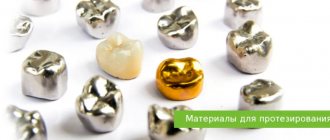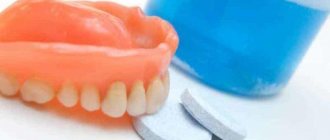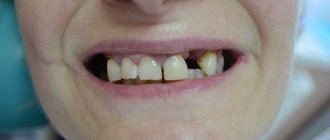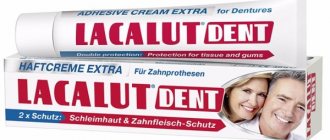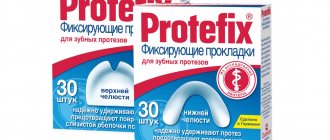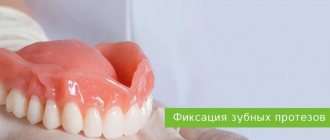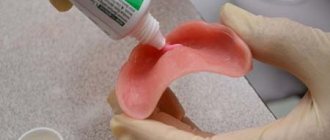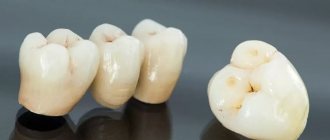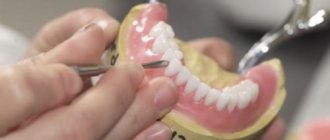603
Thermomolding pressing is considered today the most advanced method of manufacturing dentures.
In this case, polymers based on polymethyl methacrylates are used, which create a rigid base, and polyamides (nylons), with which flexible bases are obtained.
Unlike chemically cured polymers, thermoplastics do not contain allergenic monomers that irritate the mucous membrane.
About the manufacturer
The Israeli dental company Perflex LTD specializes in the production of thermoplastic polymers for the manufacture of dentures. Its product range also includes instruments, components and materials for dental laboratories.
The company was founded in 2007. This was preceded by a long period of research, development and improvement of thermoplastic materials used in dental prosthetics.
Perflex materials are used in 129 countries around the world. The company's representative office in Russia (Perflex RUS) with an office in St. Petersburg was opened in February 2013. All Perflex LTD products comply with international standards.
Cost of additional materials and services when preparing partial removable dentures
In order to make a prosthesis in our clinic, you need to make an appointment with an orthopedic doctor, the cost of a consultation is 410 rubles. The doctor will assess the condition of the gums and oral cavity as a whole and offer a suitable option. To take impressions, only an individual spoon is used, the price of a polymer spoon is 920 rubles, a regular spoon is 600 rubles. A wax bite template is made – 690 RUR. or on a hard basis - 1380 rubles. A preliminary wax model costs RUB 1,040. The finished prosthesis is then manufactured in a dental laboratory. The doctor tries on the prosthesis and adjusts it if necessary.
To produce partial dentures from Acree Free for our patients, we use material from a German company.
Advantages of materials
A special feature of materials for thermomolding is the absence of monomers, which are used for cross-linking during chemical curing.
Perflex monomer-free plastics have the following advantages:
- Biocompatibility and hypoallergenic due to the absence of monomers. Hypoallergenic thermoplastic materials are ideal for patients with hypersensitivity to various chemicals.
- High strength. Allows the production of compact, thin bases without a metal frame, which ensures high aesthetics and quick adaptation to prostheses.
- Maintainability. Dentures made from Perflex materials can be easily repaired and upgraded using thermoplastic and chemically curing polymers, adding teeth, clasps and other structural elements.
- High technology. The machinability and polishability of most Perflex materials is on par with acrylic plastics. Even materials for flexible bases (Flexinylon, for example) have quite good polishability.
- Can be used in combination with ceramics and other materials, including porcelain teeth.
- High aesthetics due to a variety of colors and the ability to produce polymer clasps that have low visibility compared to metal ones.
In general, Pereflex materials meet all the basic requirements for this class of materials and have the best characteristics to date.
Does a universal false jaw solve the problem of missing teeth and is it worth buying?
Come here to find out how dentures affect the microflora of the oral cavity.
At this address https://www.vash-dentist.ru/protezirovanie/semnyie-p/akrilovyih-ivocap.html all about Ivocap removable dentures.
Cost of services
| Dental prosthetics | |
| Removable partial denture (plastic, Perflex, Acrifri) | 21,990 - 50,740 rub. |
| Complete removable denture (plastic, Perflex, Acrifri) | 26,590 - 50,740 rub. |
| Clasp prosthesis | RUB 39,820 |
| Teeth restoration with crowns | |
| Metal-ceramic crown | 8,170 - 15,000 rub. |
| Ceramic crown on zirconium oxide | RUB 23,500 |
| Veneers | |
| Veneers | 18,000 rub. |
| Installation of dental implants | |
| Manufacturing and installation of an implant | 24,070 - 76,320 rub. |
Varieties
The Pereflex line of thermoplastic materials provides the production of dentures of all types - removable and fixed, full and partial, clasp and plate.
Thermoplastics are supplied in 2 forms:
- In the form of granules for thermomolding , filled into cartridges or placed in small containers for self-filling of cartridges.
- In the form of hard disks intended for the manufacture of prosthetic elements by milling using CAD/CAM technology.
A variety of colors allows you to obtain the optimal color of the prosthesis. Below are the types and characteristics of the main brands of Perflex LTD thermoplastics.
T-crystal
Thermoplastic monomer-free polymer. Used to make mini dentures, full dentures, partial dentures and dentures.
It has strength and elasticity, allowing you to do without a metal frame. Thanks to this, the prosthesis can be made thinner and less expensive (the process of metal casting is eliminated).
It is produced in the form of granules, packaged in polyethylene jars and filled into cartridges. Available in 5 colors – light pink, pink, transparent, purple-pink, opaque pink.
Biosense
The material is intended for the manufacture of all types of removable dentures. Available in two forms - granules and disks (Biosense CAD/CAM).
The granules have 8 colors - light pink, pink, transparent, violet-pink, opaque pink, light pink, pink-transparent, violet-pink, light.
Discs with a diameter of 98 mm and a thickness of 16, 20 and 24 mm are available in 2 colors - transparent and pink.
Biosense prostheses are strong enough to be made without a metal frame. The material has moderate flexibility, good machinability and polishability. Combination with other materials is possible.
Acryfree
The material is intended for the manufacture of prostheses of all types, including those on implants. The most important features include resistance to breakage, long service life, and low weight.
If a breakdown does occur, the prosthesis can be successfully repaired with polymers of both hot and cold polymerization.
Acryfree polishes perfectly, acquiring a beautiful shine. Can be used in combination with ceramic teeth.
Release form - granules of 8 colors: light pink, pink, transparent, violet-pink, opaque pink, light pink opaque, opaque pink No. 5, violet-pink light.
Flexinylon
Refers to materials that are used to obtain bases that are flexible but maintain sufficient stability. Used in the manufacture of standard and mini-prostheses, night guards.
It has stable color and low water absorption. Unlike standard nylon dentures, it is well polished (to a shine).
Low visibility and moderate flexibility make Flexinylon prostheses physically and psychologically comfortable for the patient.
Flexinylon can be used as a repair material for dentures made from other thermoplastics.
Presented in granules of 4 colors - light pink, pink, colorless, violet-pink, light red.
Acetal
The polymer is intended for the manufacture of removable and fixed dentures, night guards, bridges, clasps, crowns and other types of orthopedic structures, both in combination with a metal frame and without it.
It has high impact and abrasion resistance, low water absorption, easy polishability, and color stability. Durable and comfortable for the patient.
Available in the form of granules and disks (Acetal CAD/CAM) for CAD/CAM technology. The color options for granules are A2, AZ, AZ.5, A4 on the Vita scale and pink. Acetal perfectly imitates the color of natural teeth.
Disc sizes – Ø 98.5 mm, thickness 16, 20 and 24 mm. Color – A1, A2, AZ, B1, B2, C1, OM1 according to Vita jackal.
PureP
Clean, transparent and durable material. Intended for use as an intermediate element between infrastructures and cladding of orthopedic structures. The density and elasticity of the material is similar to natural bone.
Frames, bridges, crowns mounted on cement and without metal are made from PureP. As well as superstructures of implant systems - abutments, caps, restorations.
PureP elements are veneered with composite veneers, which can be removed or repaired without affecting the cemented super element.
The purity of the material allows it to be in long-term or constant contact with the mucous membrane without causing irritation. Light weight and translucency ensures full compliance with natural teeth.
Available in granules and discs (PureP CAD/CAM). The granules are packaged in jars of 50 and 100 g. Milling discs have a diameter of 98.5 mm, thickness 16, 20 and 24 mm.
Thermofix
Thermofix is an impression material used for taking impressions of jaws, making custom trays or modifying standard trays to suit individual jaw sizes.
Thermofix is used to register bites and produce night guards and whitening trays.
The material is easy to use and easy to shape. Has a color indication of readiness for working condition (white granules placed in hot water become transparent when the material becomes ready for molding).
Thermofix is available in 4 colors - white, blue, pink and yellow.
Instructions for use
The production of prostheses from Perflex thermoplastic materials is carried out using standard thermomolding pressing technology. Its essence is that a molten polymer is pressurized into a plastered model, which, after cooling, takes the desired shape.
To immediately begin thermomolding pressing, you must have:
- an assembled cuvette containing the model form.
- cartridge with polymer granules;
- heat press (injection oven) for heating and pressing the polymer into a mold.
The main, most important and time-consuming operation is modeling the prosthesis and assembling the cuvette. As for the actual wax modeling and plastering of the cuvette, they are performed according to a standard protocol.
The following operations are carried out in the following sequence:
- The plastered cuvette with the wax model is placed in a container and poured with boiling water to soften the wax. After waiting for 5-8 minutes, the cuvette is separated, the softened wax is removed, and its remains are washed off with hot water.
- The acrylic teeth are taken out and holes are drilled into them for retention. Glue the drilled teeth to the plaster bed.
- Assemble the cuvette. Now there is a cavity inside it, surrounded on all sides by plaster and the metal walls of the cuvette. The configuration of this cavity exactly matches the shape of the prosthesis.
The thermomolding operation itself is performed as follows:
- The polymer cartridge is installed in a heat press (injection oven), and the heating mode is turned on to 280°-300°.
- A cuvette with a mold is installed at the output end of the cartridge.
- After warming up the cartridge and cuvette (after about 18-20 minutes), the polymer input button is pressed at the timer signal. In this case, the press cylinder squeezes the heated mixture from the cartridge into a cuvette with a mold.
- The pressure is maintained for 5 minutes with the heat turned off.
- The cuvette is removed from the heat press and left at room temperature to cool and become slightly warm.
- The cuvette is disassembled and the prosthesis is removed.
- The prosthesis is grinded and polished.
Thermomolding technology may vary depending on the equipment used. In any case, pressing must be carried out strictly according to the instructions for the equipment used.
For what purpose are obturators installed for defects of the hard and soft palate, and what functions are assigned to them?
In this publication, we will look at the pros and cons of dentures without a palate in the case of partial absence of teeth.
Here https://www.vash-dentist.ru/protezirovanie/semnyie-p/kak-ne-dopustit-allergii-na-zubnyie.html we’ll talk about the tactics of treating allergies to dentures.
Partial removable immediate denture
The doctor will prescribe this type of orthopedic structures to you only for temporary wear. An impression will be taken of the jaw before the tooth is removed. While permanent dentures are being made for the patient, an immediate denture will be installed immediately after removal. Prescribed by a doctor to prevent tooth displacement, or at the request of the patient for aesthetic reasons. Such prosthetics will not only preserve the bite, but will also promote rapid healing of the gums. Clasps are applied to soft tissues and adjacent teeth.
Immediate dentures are divided into 2 types. Depending on the material they are:
- nylon (1 tooth – 21,850 rub.);
- plastic (1 tooth - 9200 rub.).
In our clinic, immediate dentures are completed from one to several days. Nylon dentures are softer and more comfortable to wear, they do not rub and are used by our doctors to replace extracted front teeth. We use structures with non-metallic fastenings - clasps. Plastic is rigid, but it copes with its function for a short period of time. The patient can wear the immediate prosthesis for up to three months.
Helpful Tips and Warnings
The use of Pereflex materials does not have any special differences from the use of thermoplastics from other manufacturers, and does not present any difficulties for the dental technician.
All technological details are contained in the instructions for the specific brand. The most important points affecting the quality of the future structure include plastering of models, which is recommended to be done with class 3 supergypsum.
Material of the 2nd class may not withstand pressure, and the 4th class can create difficulties when removing from the mold.
Plastering should be done on a vibrating table to eliminate air cavities. When calculating the amount of thermoplastic, you need to take into account the volume of the sprues.
After removing the wax from the plaster model, you must remember to lubricate the walls with the last heat-resistant lubricant to prevent the prosthesis from adhering too tightly to the plaster.
When using polymethylacrylates (for a hard base) on artificial teeth, one hole is sufficient as a retention point. When making flexible bases, several holes + a circular groove are made on the teeth.
In the video, watch the process of making a removable denture from Perflex Acetal.
Acry-free dentures: disadvantages
On most websites of dental clinics you can read advertising information that Acry-free dentures, although a little elastic, still have a rigid base that is capable of distributing the chewing load throughout the jaw (which fundamentally distinguishes acry-free from nylon dentures).
This is not entirely true, and let's figure out why this is important... Nylon dentures have such an elastic base that if you bite something on the denture, the chewing load will be almost completely transferred to the gum only under the biting site, and not throughout the entire denture bed ( what happens in prostheses with a hard plastic base or a metal arch). This causes not only pain when chewing, but also severe atrophy of the bone under the denture.
Acry-free dentures have lower elasticity than nylon. And, of course, in this case the chewing load will be better distributed, but there will still be bone atrophy under the prosthesis! At the same time, the rate of bone atrophy under Acri-free prostheses will still be higher than that of prostheses with a completely solid base, for example:
- clasp dentures,
- prostheses made from traditional acrylic plastic.
In addition, dentists’ reviews of Acri-free dentures also indicate that the clasps of this type of dentures are only retaining and at the same time only “gingival” ones. Such clasps do not contribute to the uniform distribution of the chewing load between the remaining teeth and the tissues of the prosthetic bed. This means that even if you still have teeth, the entire load from the Acri-free prosthesis will go only to the gums (which a priori will mean pain and discomfort when chewing food).
For some other types of dentures (for example, clasp ones), the clasps are used not only for retention, but also for support. Support clasps are capable of transferring part of the chewing load from the prosthesis directly to the remaining teeth. In turn, this will contribute to a lower rate of bone tissue atrophy under the prosthesis, and also makes the process of chewing food much more comfortable (since a significantly smaller chewing load will be applied to the gums).
Conclusions: therefore, Acry-free dentures should not be used in patients who, firstly, already have severe bone atrophy in the area of missing teeth, and secondly, in patients with periodontitis of any severity, who already have progressive loss of bone tissue around the teeth . It is also undesirable to use such dentures in patients suffering from excessive involuntary clenching of teeth (bruxism) and high tone of the masticatory muscles.
Reviews
Dentists usually do not inform patients from what materials the elements of their prosthesis are made. And this is understandable, in order to receive a quality service, there is no need to be informed in all its intricacies.
If you do know that your prosthesis was made from Pereflex thermoplastics, tell us how high quality and comfortable it was. Comments can be left at the bottom of the page.
If you find an error, please select a piece of text and press Ctrl+Enter.
Tags dentures removable dentures
Did you like the article? stay tuned
Previous article
Alvostaz sponge - hemostatic and antiseptic compress
Next article
Which dentures are considered best: removable or fixed?
